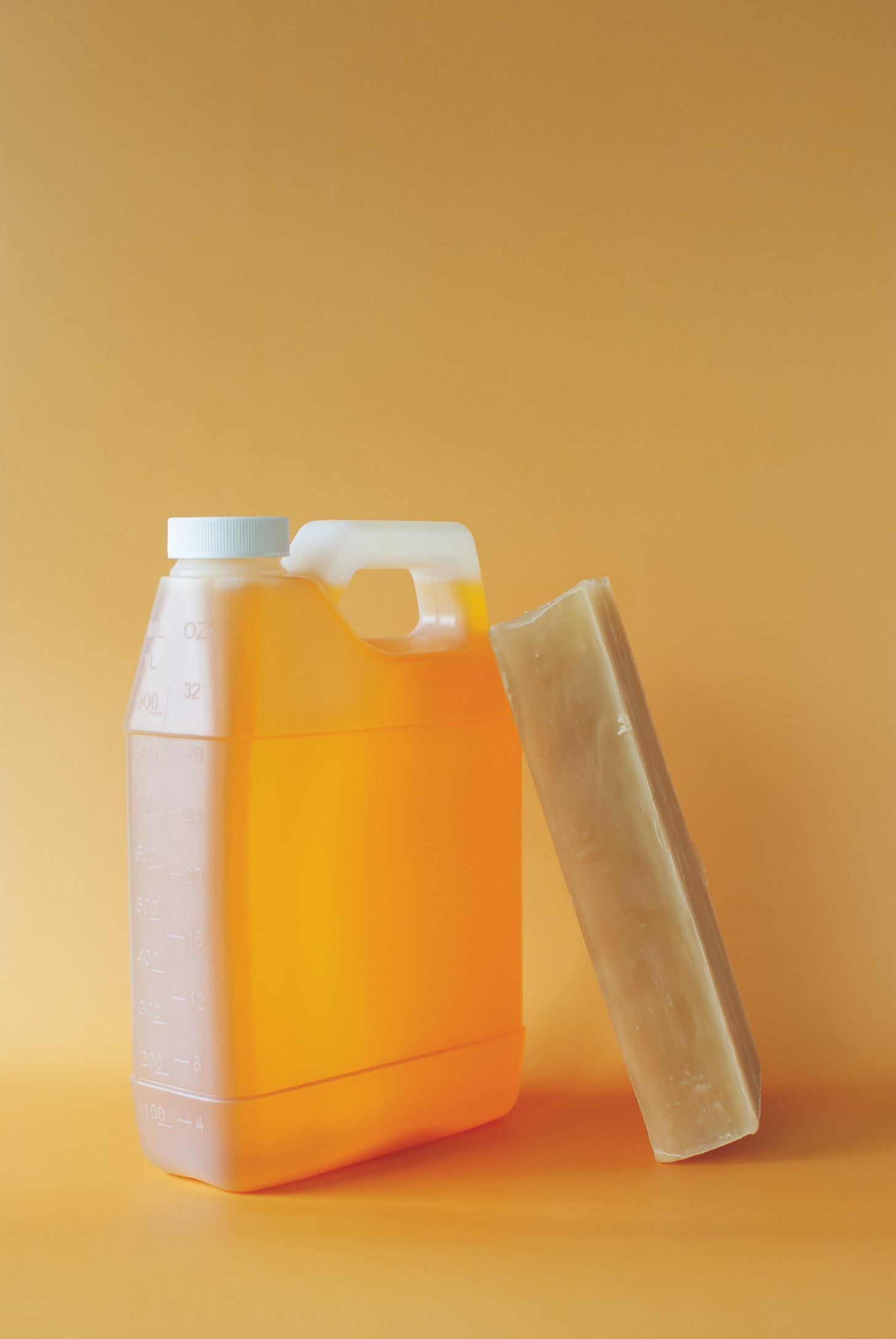We're Making: Wood Resurrection Elixir
A homemade wax concoction to condition your wood items, and we're going to be witchy about it.
We needed a table, but it seemed silly to order one online and like it could be a long-term needle/haystack scenario if we attempted to mine one in the right dimensions from an antique store. So, I asked a friend, who introduced me to Tristan, who made a really special table that I love and that is all joinery, no glue, no screws (all scary when a child tries to climb on top, even though I should know better; in dado we trust, I say).
So, Tristan made us a table, which was something we exchanged money for; but he also gave me a lifelong gift, for free. And that is the gift of homemade wood conditioning wax. When he—and a few other pals, table is large—came to drop it off, he handed me a lil’ jar of mustard yellow goo. In fact, when I first met him to talk tables, he was burbling a little vat of the stuff on the stove for some other project. After I ran out of said goo, I got in touch to ask how to be a wood witch (his self-ascribed term, I should note) like him and he kindly sent his recipe along.
All we’re doing is:
+ 1 part food grade beeswax
+ 2 parts some sort of oil. I used linseed (aka flaxseed), but tung, mineral, even almond oil are also options. Olive oil will turn rancid eventually, avoid it!
Process:
- Melt it on the stove. Double-boiler probably preferred, but I hardly ever do anything the way you are supposed to, so I just made sure to keep stirring, keep the heat low, and all was fine.
- Pour into jar or other useful vessel; allow to cool.
Bonus tip! Pour it over a cutting board—that way if it dribbles and spills, you can just work it into the board afterwards.
- Use an rag to scoop a little bit out and work it into your wood item, with the grain.
- Feel accomplished despite having done, frankly, very little.
While simple, this two part wood finish is actually extremely clever. In wood finishing, as with, say, sunscreen, there are essentially two types: those that penetrate and soak in; and those that sit on top.
Evidence of oil conditioners—linseed/flaxseed and tung oils—date back to early China. Oils soak into the wood, help condition the wood, and, in the case of something that sees a lot of action like a butcher block or wooden spoon, keeps the wood healthy and less likely to split. They are food safe, too, which is why they’re popular for kitchen items.
Wax, on the other hand—despite how much you may work it into the wood—sits on top, acting as a barrier or protectant. Wax was a popular finish in early New England as beeswax was available in abundance and it’s easy to adjust the finish to your particular desired amount of sheen. It became especially popular during the Revolutionary War, when trade embargoes made imported finishes harder to come by. Sounds familiar, eh? Some woodworkers even kept bees so that they could use the wax! Fun of them!
By combining these two into one wood finish, we are both conditioning the wood, helping maintain the overall health of the piece and protecting it—semi-waterproofing it—against any possible wood-related threats. Threats a spilled bottle of sumi ink, for instance (another story for another time).
Here are a couple of sources I have been reading about wood waxes and finishes:
John Canning Preservation Blog
Professional Restorers International
Treatex Blog: A History of Wood Finishes
Society for the Preservation of New England Antiquities: Uses of Wax Finishes in Preindustrial American Furniture
Do you think you’ll try it? I really recommend it, if not for the wood-supportive properties, at least for the fact that your home will smell so good, of beeswax.
I know I said I’d take it to a vote, but it seems like we may have a favorite book idea coming through for book club anyway… Come through the chat and make your opinion known. Or forever read Olivia Liang, no other options exist! (LINK)
Many, many newsletters ago, I linked to a whole lot of octagonal homes and so forever Zillow will let me know about them via email. This one has a $10k reduction and still rules, if I do say so myself. (LINK)
Do you have a tiny home or a cabin or somewhere smol that could use this absolutely incredible stove-sink combo?? (LINK)
Pockets! Learn how to add them, extend them. (LINK)










Thank you for this recipe! I have some similar lovely stuff called “Clapham’s Salad Bowl Finish”, but I love that I can now just make it myself (my bread board is looking a little dehydrated)
That sink-stove is tops! Perfect for Forest House (the mini summer studio I’m building)